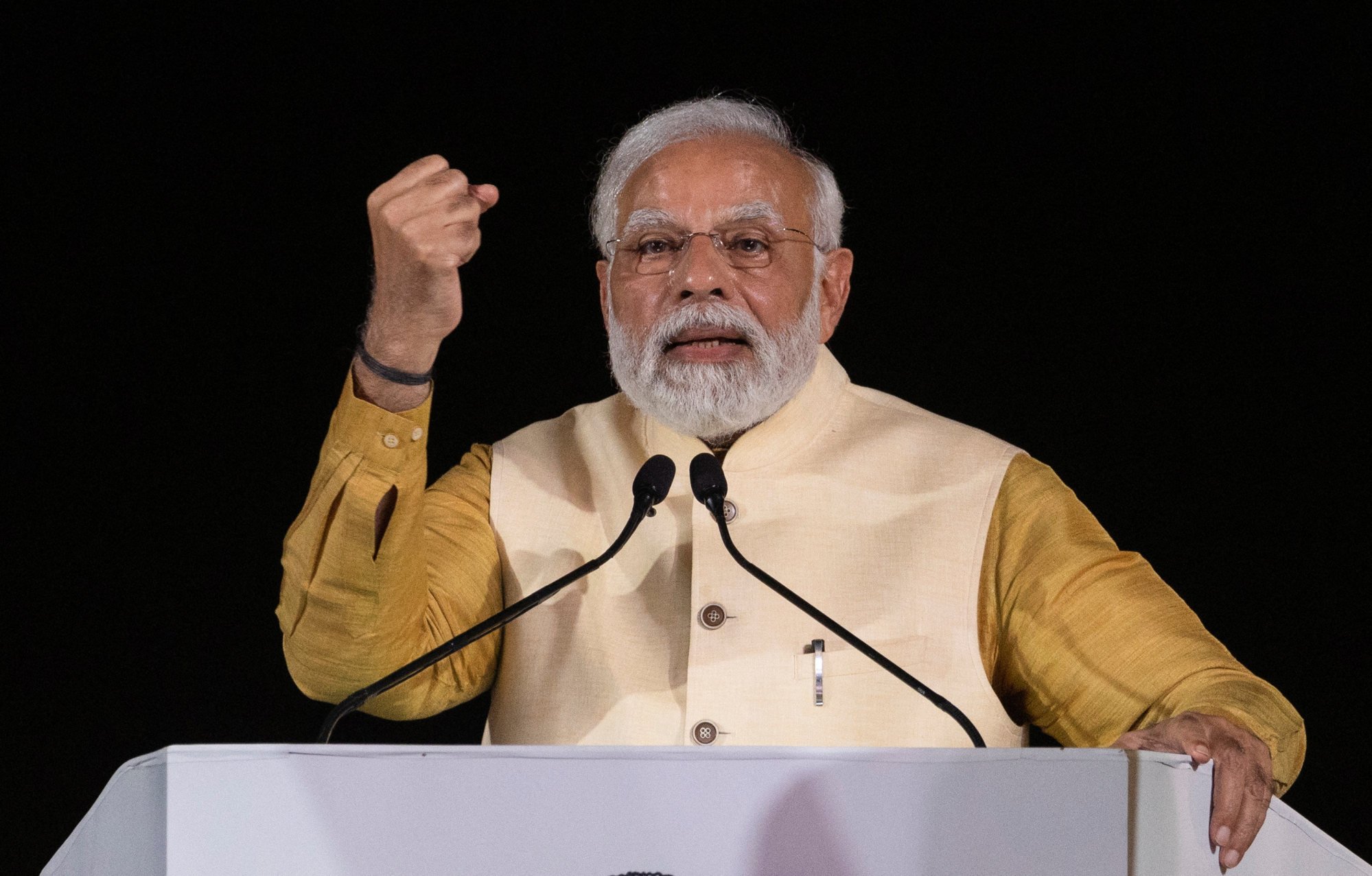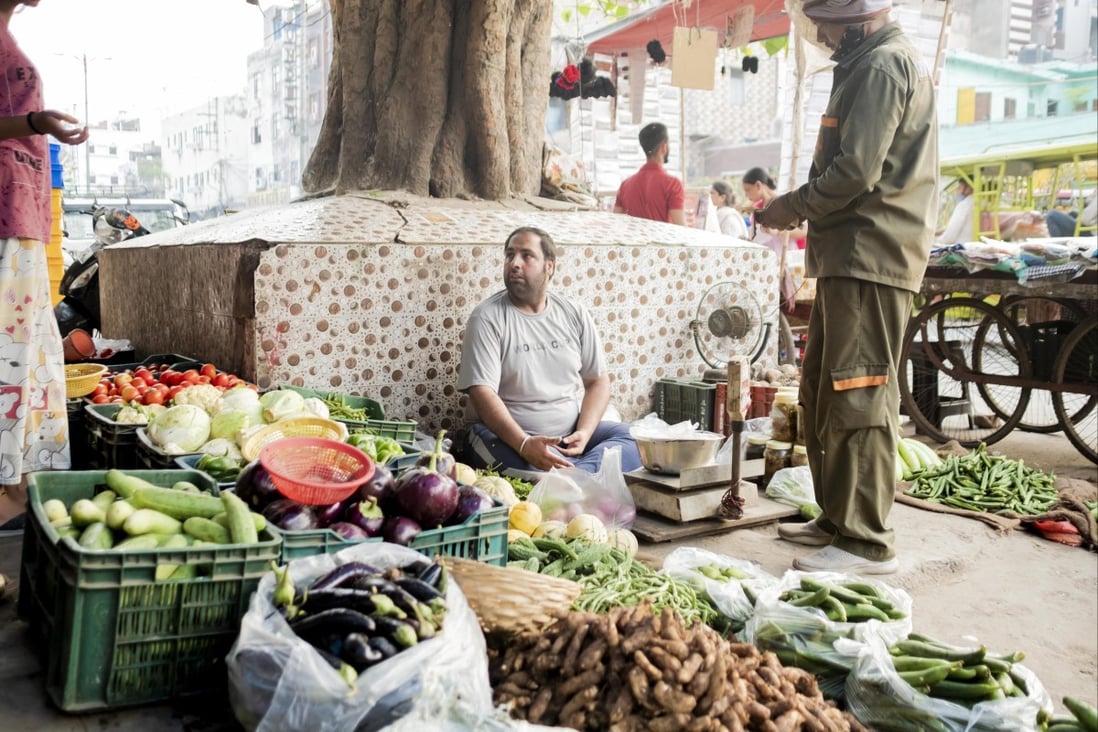
views
- India cemented 5th place by posting first-quarter growth between April and June of 13.5 per cent, taking its economy to an estimated US$854.7 billion
- But analysts say high unemployment, weak domestic consumption and a slowing global economy could curtail growth in the coming quarters
-
Indians are rejoicing after the country overtook former colonial ruler Britain to become the world’s fifth-largest economy, but analysts have called for a “reality check”, saying more needs to be done to reduce unemployment and inequality.
“The pleasure of surpassing Britain, which ruled over India for 250 years, supersedes the mere statistics of improved rankings … it’s special,” Prime Minister Narendra Modi said last week.
India cemented fifth place by posting first-quarter growth between April and June of 13.5 per cent, government data showed, streaking ahead of Britain whose economy shrank by 0.1 per cent during the same period.
As of March, India’s economy had grown to US$854.7 billion compared to Britain’s US$816 billion, according to calculations by Bloomberg using International Monetary Fund figures.
Business leaders also feted India’s achievement of pushing the UK into sixth place in the global rankings. “The law of karma works,” said Anand Mahindra, the billionaire chairman of the cars-to-finance Mahindra Group.
Some Indians have also compared the country’s expansion to that of China, which only grew by 0.4 per cent in the April-to-June quarter.
The achievement, which came as India celebrated 75 years of independence from Britain, marks the first time that the country has ranked among the world’s top five economies – behind only the US, China, Japan and Germany.Nirmala Sitharaman, the finance minister, told a business meeting last week that India was on course to become the world’s third-largest economy by the end of 2029. “Today, fifth, soon, third,” she said. A decade ago, India was the 11th largest economy while Britain was in 5th place in the IMF rankings.
Despite the “proud moment” made sweeter by the fact that it came during India’s 75th year of independence, Uday Kotak, chief executive officer of Kotak Mahindra Bank, called for a “reality check”.
In terms of per-capita gross domestic product, “we are at US$2,500 vs Britain’s US$47,000. We have miles to go!” he tweeted. “Let’s be at it,” he urged.
Even then, India, now classed as a lower-income nation, could only become a middle-income country and attain a per-capita income of US$10,000 by 2047 if it managed to log sustained growth of 7 to 7.5 per cent, said Bibek Debroy, who heads the government’s Economic Advisory Council. But achieving such a growth rate over a number of years is by no means a certainty, economists say, as India has only ever done it once before, between 2003 and 2007, under the previous Congress government.
The seemingly enviable growth figure of 13.5 per cent was due to the economy bouncing back from a bad performance during the last two pandemic years, but it fell below the central bank’s target of 16.2 per cent.
Brokerages now are paring their growth forecasts for the 2022-23 financial year to between 6.8 and 7.2 per cent, down from earlier projections of over 10 per cent.
“The reading was materially below our expectations,” said Santanu Sengupta, Goldman Sachs’ India analyst, adding the investment house sees downside risks to its growth forecast of 7.2 per cent.The coming quarters will also be downhill as the low base effect from the Covid-19 slowdown recedes and the combined effect of monetary tightening to check surging inflation, fading pent-up pandemic demand, stubbornly high unemployment and a sharply slowing global economy exact their toll, economists say.
The country of 1.4 billion people is already “seeing signs of a waning of the intensity of tailwind generated by the [pandemic] economic reopening”, according to Societe Generale’s India economist Kunal Kundu.
First-quarter private consumption climbed 25.9 per cent from a year ago, while trade, hotels and transport grew 25.7 per cent and investment jumped 20.1 per cent.
But manufacturing, which is vital to create jobs on a scale that will absorb the 12 million young people who flood annually into the workforce, grew by an anaemic 4.8 per cent.
The annual number of non-farm jobs being created now is around 4 million. Real wages are at a record low, with many Indians earning too little to fuel the consumption growth the economy needs to fire on all cylinders, economists say.
India’s upturn is likely to continue being weighed down by “a rather weak labour market recovery and quite a benign wage outlook” suggesting “a weak domestic consumption outlook”, Kundu said.
The country’s unemployment rate hit a 12-month peak in August of 8.3 per cent, private research firm Centre for Monitoring Indian Economy said, up from 5 per cent five years ago. The August figure excluded the millions of Indians who have already dropped out of the workforce because they have lost hope of getting hired.
India’s headline numbers will still make it the fastest-expanding major economy this year and economists have forecast about 6.3 per cent growth next year, with expansion continuing at that level in coming years.
The McKinsey consultancy, though, in a 2020 report estimated the economy would need to grow by 8.0 to 8.5 per cent annually to supply enough jobs. Otherwise, “India risks a decade of stagnating incomes and quality of life”, it said.
The underlying growth trajectory is even less favourable than the headline figures.T. N. Ninan, a respected economic pundit in India, said growth over a five-year period from the pre-Covid year of 2019 would have averaged 3.6 per cent, making it the slowest five-year spell since the 1970s when former prime minister Indira Gandhi was in power and growth hovered at just under 2 per cent.
And higher growth may not necessarily result in greater social well-being, and distributing wealth and reducing economic inequality are key, but India fares badly on this score.
The government Competitiveness Roadmap for India@100 report released in August showed inequality in the country had “significantly increased” since 2000.
India scored low marks in almost all social progress categories in the report – a development road map for the country’s 100th independence anniversary – and ranked 135th out of 163 nations on equal opportunities for quality education and 145th for quality healthcare access.
A vendor at a vegetable stall in New Delhi. India posted 13.5-per-cent first-quarter growth between April and June. Photo: BloombergIndians are rejoicing after the country overtook former colonial ruler Britain to become the world’s fifth-largest economy, but analysts have called for a “reality check”, saying more needs to be done to reduce unemployment and inequality.
“The pleasure of surpassing Britain, which ruled over India for 250 years, supersedes the mere statistics of improved rankings … it’s special,” Prime Minister Narendra Modi said last week.
India cemented fifth place by posting first-quarter growth between April and June of 13.5 per cent, government data showed, streaking ahead of Britain whose economy shrank by 0.1 per cent during the same period.
 Indian Prime Minister Narendra Modi said ‘the pleasure of surpassing Britain’ was ‘special’. Photo: Reuters
Indian Prime Minister Narendra Modi said ‘the pleasure of surpassing Britain’ was ‘special’. Photo: ReutersAs of March, India’s economy had grown to US$854.7 billion compared to Britain’s US$816 billion, according to calculations by Bloomberg using International Monetary Fund figures.
Business leaders also feted India’s achievement of pushing the UK into sixth place in the global rankings. “The law of karma works,” said Anand Mahindra, the billionaire chairman of the cars-to-finance Mahindra Group.
Some Indians have also compared the country’s expansion to that of China, which only grew by 0.4 per cent in the April-to-June quarter.
As its population swells, can India chart a China-like path in manufacturing?25 Jul 2022The achievement, which came as India celebrated 75 years of independence from Britain, marks the first time that the country has ranked among the world’s top five economies – behind only the US, China, Japan and Germany.
Nirmala Sitharaman, the finance minister, told a business meeting last week that India was on course to become the world’s third-largest economy by the end of 2029. “Today, fifth, soon, third,” she said. A decade ago, India was the 11th largest economy while Britain was in 5th place in the IMF rankings.
Despite the “proud moment” made sweeter by the fact that it came during India’s 75th year of independence, Uday Kotak, chief executive officer of Kotak Mahindra Bank, called for a “reality check”.






















Comments
0 comment